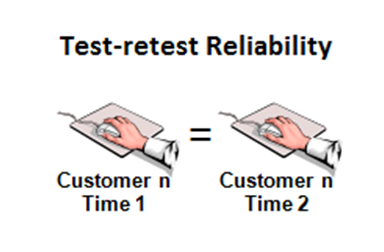
Reliability refers to whether or not you get the same answer by using an instrument to measure something more than once. In simple terms, research reliability is the degree to which research method produces stable and consistent results. A specific measure is considered to be reliable if its application on the same object of measurement number of times produces the same results. Research reliability can be divided into three categories: 1. Test-retest reliability relates to the measure of reliability that has been obtained by conducting the same test more than one time over period of time with the participation of the same sample group. Example: Employees of ABC Company may be asked to complete the same questionnaire about employee job satisfaction two times with an interval of one week, so that test results can be compared to assess stability of scores. 2. Parallel forms reliability relates to a measure that is obtained by conducting assessment of the same phenomena with the participation of the same sample group via more than one assessment method. Example: The levels of employee satisfaction of ABC Company may be assessed with questionnaires, in-depth interviews and focus groups and results can be compared. 3. Inter-rater reliability as the name indicates relates to the measure of sets of results obtained by different assessors using same methods. Benefits and importance of assessing inter-rater reliability can be explained by referring to subjectivity of assessments. Example: Levels of employee motivation at ABC Company can be assessed using observation method by two different assessors, and inter-rater reliability relates to the extent of difference between the two assessments. 4. Internal consistency reliability is applied to assess the extent of differences within the test items that explore the same construct produce similar results. It can be represented in two main formats. a)…
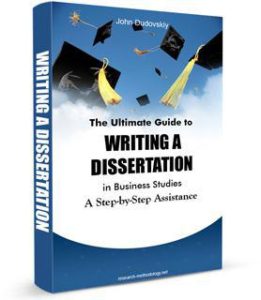
Grounded theory aims to discover problems in a given business environment and how parties involve handle these problems. Grounded theory aims to formulate, test and reformulate prepositions until a theory is developed. This approach refers to theory that is “grounded in or developed inductively from a set of data”[1] Grounded theory works in opposite way to traditional research and it may even appear to contradict scientific method. An inductive methodology, grounded theory methodology comprises the following four stages: Codes. Anchors are identified to collect the key points of data Concepts. Codes of similar content are collected to be able to group the data Categories. Broad groups of similar concepts are formed to generate a theory Theory. A collection of explanations are generated that explain the subject of the research (hypothesis) If you decide to apply grounded theory methodology in your dissertation, you have to decide how to select cases for your research. During the process of data analysis, the categories being developed will point to the new cases to be chosen for further data collection. Accordingly, in this type of research the purpose of sampling is to continue theoretical inquiry until theoretical saturation is reached, rather than to ensure representativeness of samples. Theoretical saturation is reached when data collection can no longer find new properties relevant to a category. Advantages of Grounded Theory Methodology Grounded theory is helpful to develop an understanding phenomena that cannot be explained with existing theories and paradigms. Appropriate application of this methodology in your dissertation is most likely to gain you high marks This methodology offers a systematic and rigorous process of data collection and data analysis. Therefore, research problem can be studied in a great level of depth. Application of this methodology in practice fosters creativity and critical thinking Disadvantages of Grounded Theory…

Case studies are a popular research method in business area. Case studies aim to analyze specific issues within the boundaries of a specific environment, situation or organization. According to its design, case studies in business research can be divided into three categories: explanatory, descriptive and exploratory. Explanatory case studies aim to answer ‘how’ or ’why’ questions with little control on behalf of researcher over occurrence of events. This type of case studies focus on phenomena within the contexts of real-life situations. Example: “An investigation into the reasons of the global financial and economic crisis of 2008 – 2010.” Descriptive case studies aim to analyze the sequence of interpersonal events after a certain amount of time has passed. Studies in business research belonging to this category usually describe culture or sub-culture, and they attempt to discover the key phenomena. Example: “Impact of increasing levels of multiculturalism on marketing practices: A case study of McDonald’s Indonesia.” Exploratory case studies aim to find answers to the questions of ‘what’ or ‘who’. Exploratory case study data collection method is often accompanied by additional data collection method(s) such as interviews, questionnaires, experiments etc. Example: “A study into differences of leadership practices between private and public sector organizations in Atlanta, USA.” Advantages of case study method include data collection and analysis within the context of phenomenon, integration of qualitative and quantitative data in data analysis, and the ability to capture complexities of real-life situations so that the phenomenon can be studied in greater levels of depth. Case studies do have certain disadvantages that may include lack of rigor, challenges associated with data analysis and very little basis for generalizations of findings and conclusions. My e-book, The Ultimate Guide to Writing a Dissertation in Business Studies: a step by step assistance…

Methods of correlation and regression can be used in order to analyze the extent and the nature of relationships between different variables. Correlation analysis is used to understand the nature of relationships between two individual variables. For example, if we aim to study the impact of foreign direct investment (FDI) on the level of economic growth in Vietnam, then two variables can be specified as the amounts of FDI and GDP for the same period. Correlation coefficient ‘r’ is calculated through the following formula: Where, x and y are values of variables, and n is size of the sample. The value of correlation coefficient can be interpreted in the following manner: If ‘r’ is equal to 1, then there is perfect positive correlation between two values; If ‘r’ is equal to -1, then there is perfect negative correlation between two values; If ‘r’ is equal to zero, then there is no correlation between the two values. In practical terms, the closer the value of ‘r’ to 1, the higher positive impact of FDI on GDP growth in Vietnam. Similarly, if the value of ‘r’ is less than 0, the closer it is to – 1, the greater the negative impact of FDI on GDP growth in Vietnam. If ‘r’ is equal to zero, then FDI is perceived to have no impact on GDP change in Vietnama within the given sample. The most popular forms of correlation analysis used in business studies include Pearson product-moment correlation, Spearman Rank correlation and Autocorrelation. The Pearson product-moment correlation is calculated by taking the ratio of the sample of the two variables to the product of the two standard deviations and illustrates the strength of linear relationships. In Pearson product-moment correlation the correlation coefficient is not robust due to the fact that strong linear relationships between the…

Regression analysis is a quantitative research method which is used when the study involves modelling and analysing several variables, where the relationship includes a dependent variable and one or more independent variables. In simple terms, regression analysis is a quantitative method used to test the nature of relationships between a dependent variable and one or more independent variables. The basic form of regression models includes unknown parameters (β), independent variables (X), and the dependent variable (Y). Regression model, basically, specifies the relation of dependent variable (Y) to a function combination of independent variables (X) and unknown parameters (β) Y ≈ f (X, β) Regression equation can be used to predict the values of ‘y’, if the value of ‘x’ is given, and both ‘y’ and ‘x’ are the two sets of measures of a sample size of ‘n’. The formulae for regression equation would be Where, Do not be intimidated by visual complexity of correlation and regression formulae above. You don’t have to apply the formula manually, and correlation and regression analyses can be run with the application of popular analytical software such as Microsoft Excel, Microsoft Access, SPSS and others. Linear regression analysis is based on the following set of assumptions: 1. Assumption of linearity. There is a linear relationship between dependent and independent variables. 2. Assumption of homoscedasticity. Data values for dependent and independent variables have equal variances. 3. Assumption of absence of collinearity or multicollinearity. There is no correlation between two or more independent variables. 4. Assumption of normal distribution. The data for the independent variables and dependent variable are normally distributed My e-book, The Ultimate Guide to Writing a Dissertation in Business Studies: a step by step assistance offers practical assistance to complete a dissertation with minimum or no stress. The e-book covers all stages of writing a dissertation…
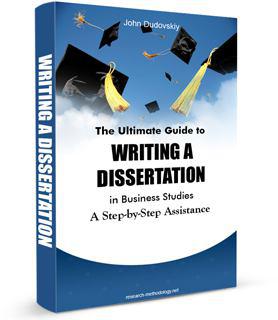
Focus groups are group discussions conducted with the participation of 7 to 12 people to capture their experiences and views regarding specific issues closely related to research question(s). Focus groups data collection method is most suitable for types of studies where multiple perspectives needed to be obtained regarding the same problem. Focus groups are led by a moderator who is responsible to ensure that group discussions remain focused on the research area. Advantages of focus groups include the possibility of obtaining primary data through non-verbal channels, as well as, verbal channels and approaching the research area from various perspectives. As is it is the case with any other research method, focus gropes have some disadvantages as well. Group discussions may be heavily influenced by one or two dominant individuals in the group. Also, some members of focus group may be discouraged from participating in discussions due to lack of confidence or not articulate communication skills. Moreover, the nature of primary data obtained through focus groups are greatly influenced by environmental factors such as design of the room, room temperature, time of the day, etc. It is important to understand that data collection and data analysis using focus groups is much more difficult compared to questionnaires and interviews. You have to make sure that you fully understand these difficulties before making a final choice of primary data collection method. However, this is not to say that you should not use focus group to collect primary data for your dissertation. My e-book, The Ultimate Guide to Writing a Dissertation in Business Studies: a step by step assistance offers practical assistance to complete a dissertation with minimum or no stress. The e-book covers all stages of writing a dissertation starting from the selection of the research area to submitting the completed version of the…
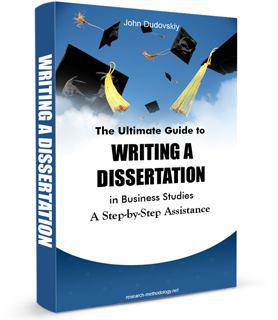
Interviews can be defined as a qualitative research technique which involves “conducting intensive individual interviews with a small number of respondents to explore their perspectives on a particular idea, program or situation.”[1] There are three different formats of interviews: structured, semi-structured and unstructured. Structured interviews consist of a series of pre-determined questions that all interviewees answer in the same order. Data analysis usually tends to be more straightforward because researcher can compare and contrast different answers given to the same questions. Unstructured interviews are usually the least reliable from research viewpoint, because no questions are prepared prior to the interview and data collection is conducted in an informal manner. Unstructured interviews can be associated with a high level of bias and comparison of answers given by different respondents tends to be difficult due to the differences in formulation of questions. Semi-structured interviews contain the components of both, structured and unstructured interviews. In semi-structured interviews, interviewer prepares a set of same questions to be answered by all interviewees. At the same time, additional questions might be asked during interviews to clarify and/or further expand certain issues. Advantages of interviews include possibilities of collecting detailed information about research questions. Moreover, in in this type of primary data collection researcher has direct control over the flow of process and she has a chance to clarify certain issues during the process if needed. Disadvantages, on the other hand, include longer time requirements and difficulties associated with arranging an appropriate time with perspective sample group members to conduct interviews. When conducting interviews you should have an open mind and refrain from displaying disagreements in any forms when viewpoints expressed by interviewees contradict your own ideas. Moreover, timing and environment for interviews need to be scheduled effectively. Specifically, interviews need to be conducted…
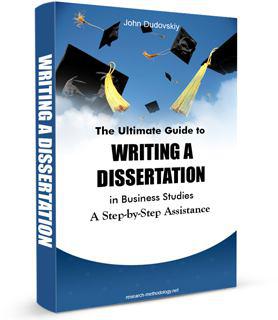
The term experiment may seem to be associated with the image of a chemist surrounded by bubbling tubes and other related items. Traditionally, experiments have been used by physical and behavioural researchers to a greater extent compared to business scientists. Nevertheless, experiments research can be effectively used in businesses in order to analyse cause and affect relationships. Deductive approach is mainly used for experiments research in order to test hypotheses. Experiments are usually used in causal studies. Specifically, experiment researches involve manipulation with an independent variable in order to assess its impacts on dependent variables. Changes in price levels on volume of sales can be mentioned as a basic example for experiment. In this specific example, price can be specified as independent variable, whereas sales would be dependent variable. The nature of relationships between two variables in causal experimental researches may be divided into three categories: symmetrical, reciprocal and asymmetrical. Symmetrical relationship can be observed when two variables fluctuate at the same time. However, in symmetrical relationship change in one variable is not caused by change in another variable. In other words, symmetrical relationships of two individual variables usually would be the cause of another factor. For example, decrease in the levels of consumption of luxury products and decrease on the levels of consumer trust on financial institutions may occur at the same time as a result of a third factor – increasing level of uncertainty of perspectives of national economy. Reciprocal relationship between two variables occurs when there is a mutual influence and reinforcement between two variables. For example, impacted by a marketing message a consumer purchases a car from a particular brand for the first time. Consequently, the consumer becomes loyal to the brand considering more purchases from the same brand in the future. Hence, the mutual influence between…
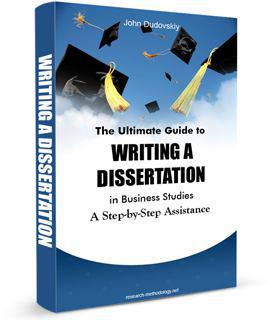
The essence of survey method can be explained as “questioning individuals on a topic or topics and then describing their responses”[1]. In business studies survey method of primary data collection is used in order to test concepts, reflect attitude of people, establish the level of customer satisfaction, conduct segmentation research and a set of other purposes. Survey method can be used in both, quantitative, as well as, qualitative studies. Survey method pursues two main purposes: Describing certain aspects or characteristics of population and/or Testing hypotheses about nature of relationships within a population. Survey method can be broadly divided into three categories: mail survey, telephone survey and personal interview. The descriptions of each of these methods are briefly explained on the following table [2]: Survey method Description Mail survey A written survey that is self-administered Telephone survey A survey conducted by telephone in which the questions are read to the respondents Personal interview A face-to-face interview of the respondent Major survey methods and their descriptions Alternatively, from the viewpoint of practicality, the most popular variations of surveys include questionnaires, interviews and documentation review. The main advantages and disadvantages associated with these primary data collection methods are explained by Denscombe (2010)[3] in the following manner: Method Purpose Advantages Disadvantages Questionnaires Conducted in order to gather large size of information in a short period of time Members of the sample group can remain anonymous Considerably cheaper than most of the other primary data collection methods Possibility of generating large amount of data Difficulties of ensuring greater depth for the research The problem of the ‘first choice selection’ Interviews Conducted in order to reflect emotions and experiences, and explore issues with a greater focus The possibility to direct the process of data collection The possibility to collect the specific type of information required Great amount of…
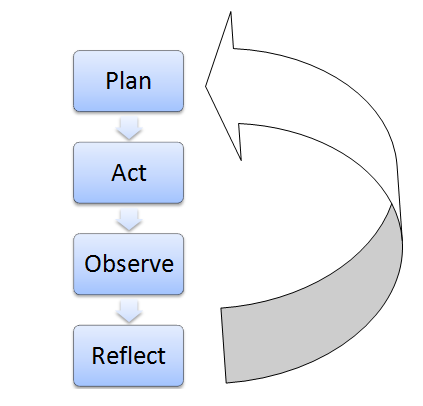
Action research can be defined as “an approach in which the action researcher and a client collaborate in the diagnosis of the problem and in the development of a solution based on the diagnosis”[1]. In other words, one of the main characteristic traits of action research relates to collaboration between researcher and member of organisation in order to solve organizational problems. Action study assumes social world to be constantly changing, both, researcher and research being one part of that change.[2] Generally, action researches can be divided into three categories: positivist, interpretive and critical. Positivist approach to action research, also known as ‘classical action research’ perceives research as a social experiment. Accordingly, action research is accepted as a method to test hypotheses in a real world environment. Interpretive action research, also known as ‘contemporary action research’ perceives business reality as socially constructed and focuses on specifications of local and organisational factors when conducting the action research. Critical action research is a specific type of action research that adopts critical approach towards business processes and aims for improvements. The following features of action research need to be taken into account when considering its suitability for any given study: It is applied in order to improve specific practices. Action research is based on action, evaluation and critical analysis of practices based on collected data in order to introduce improvements in relevant practices. This type of research is facilitated by participation and collaboration of number of individuals with a common purpose Such a research focuses on specific situations and their context Advantages of Action Research High level of practical relevance of the business research; Can be used with quantitative, as well as, qualitative data; Possibility to gain in-depth knowledge about the problem. Disadvantages of Action Research Difficulties in distinguishing between action and research and…
